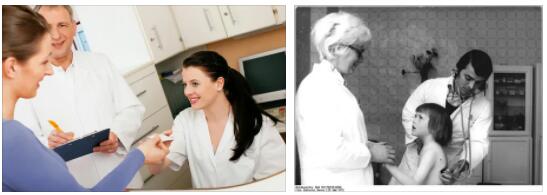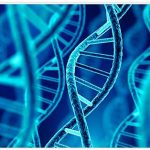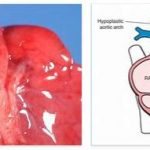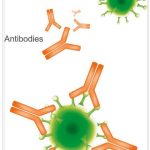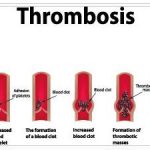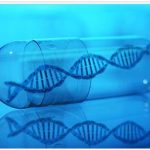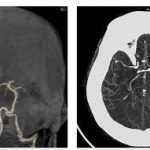This congenital skin disorder is known under the medical term Netherton Syndrome. However, the correct term is Comèl Netherton syndrome. This designation goes back to the first descriptors Marcell Comèl and Weldon Netherton. Colloquially, this hereditary disease is also referred to as bamboo hair syndrome. Characteristic features are allergic hypersensitivity, bamboo hair as a result of an anomaly in the hair shaft and the skin features of typical psoriasis.
What is Netherton Syndrome?
This hereditary skin disease Netherton Syndrome is also known as Bamboo Hair Syndrome. The main feature is trichorrhexis invaginata, an anomaly of the hair shaft that makes the hair look like bamboo cane. Other characteristic features are atopic symptoms, which are manifested by a special form of allergic hypersensitivity and include various side effects. See phonecations for All You Need to Know About Germ Cell Tumor.
Another clinical symptom of Netherton syndrome is congenital ichthyosiform erythroderma in the form of scaly, red and itchy skin that is present at birth. Accompanying symptoms are often allergic reactions in the form of asthma.
Causes
Netherton syndrome is an autosomal recessive skin disease that is present at birth. This means that both parents carry an altered genetic material that they pass on to their child. However, they do not have to be affected themselves, it is sufficient that they are carriers of the genetic defect, which consequently does not occur in every generation.
SPINK5 mutations, which lead to a severely disrupted barrier function of the skin, are identified as the cause of this hereditary disease. The natural protective function of the skin is overridden. This hereditary disease is extremely rare and has only been described 2,000 times to date. For this reason, a conclusive diagnosis is often difficult.
Symptoms, Ailments & Signs
Characteristic symptoms are reddened, itchy and inflamed areas of skin that can appear anywhere on the body in the form of skin eczema and neurodermatitis. Clinical features of this disease are knotty, dull, spiky and brittle hair.
Eyelashes and eyebrows often fall out and do not grow back properly. Many infants and young children with Netherton syndrome develop associated allergic symptoms such as asthma, hay fever, food intolerance, and conjunctivitis. Affected children show delayed growth, short stature and developmental delays.
In some cases, there is also an intellectual deficit. Another clinical symptom is a disturbed amino acid metabolism with increased urination. Complications can include severe infections, diarrhea, and decreased nutrient utilization.
Diagnosis & course of disease
The final diagnosis is an immunohistochemical finding, which is accompanied by various physical examinations. With this finding, the causal SPINK5 mutations can be determined with certainty on the basis of the LEKTI detection. If Netherton syndrome is only diagnosed in the neonate, immediate action is indicated.
If the initial suspicion is confirmed, the dermatologist obtains information about the family’s medical history. Genetic counseling is offered to parents. In order to diagnose Netherton syndrome beyond doubt, both parents are subjected to a DNA test. If the findings are confirmed before the child is born, the treating physician carries out a prenatal diagnosis.
Blood analyzes and other laboratory values can also provide information. Before the final diagnosis can be made, a differential diagnosis must be made in order to rule out further infantile erythroderma and similarly progressing dermatitis diseases. Netherton syndrome accompanies affected patients throughout their lives, but the hair and skin changes become less severe over time.
In many cases, the growth disturbances and developmental delays decrease after the second year of life. Nevertheless, complaints remain that require regular treatment and care. Newborns with life-threatening complications have an unfavorable prognosis, which is usually confirmed by a high mortality rate.
Complications
Due to Netherton Syndrome, patients suffer from various skin ailments. In many cases, these have a very negative effect on the psyche of those affected, so that most patients also suffer from inferiority complexes or significantly reduced self-esteem. The skin is reddened and can also be affected by an unpleasant itching.
Furthermore, the hair of the affected person is very brittle, so that hair loss can occur. As a rule, most patients also suffer from various intolerances due to Netherton syndrome. Conjunctivitis can also occur more easily due to the syndrome and continue to make everyday life difficult for those affected. The child’s growth is delayed and mental underdevelopment also occurs.
As a rule, the children then need special care and are dependent on the help of other people in their lives. However, the life expectancy of those affected is not affected by Netherton syndrome. A causal treatment of this disease is usually not possible. For this reason, the therapy aims primarily at reducing the individual symptoms. Usually there are no complications.
When should you go to the doctor?
If family members have already been diagnosed with Netherton syndrome, a genetic test can be carried out on the offspring. This provides information about the presence of the disease and enables early intervention and the timely creation of a treatment plan.
Changes in the appearance of the skin are a characteristic feature of the disease. If itching, reddening of the skin or inflamed areas occur, a doctor is required. Care should be taken with open wounds. The child’s parents should ensure sterile wound care, otherwise there is a risk of sepsis. Since this is a potentially life-threatening condition, a doctor should be consulted as soon as there are any changes or abnormalities in the wound.
If there are various food intolerances, hay fever, a runny nose, red eyes or breathing problems, a doctor’s visit is necessary. In the event of acute shortness of breath, an emergency service must be alerted and first aid measures must be taken. Otherwise, there is a risk of the person concerned dying prematurely. Diarrhoea, noises during digestion or a general feeling of illness are further signs of a health impairment and should therefore be examined. If there is increased urination, a doctor should be consulted.
If a growing child shows developmental delays, these should be discussed with a doctor. In the case of learning deficits, low physical growth or behavioral problems, the clarification of the complaints is indicated.
Treatment & Therapy
Adequate understanding of the disease and close collaboration between the treating dermatologist and the parents of the affected child help to reduce discomfort and symptoms. The instructions of the doctor treating you must be followed. For symptomatic treatment, dermatologists prefer to use urea for topical application to treat the red, inflamed and itchy areas of the skin.
Urea is a component of many medical ointments for the treatment of neurodermatitis as well as the well-known wound and healing ointment. Topical immunomodulators such as tacrolimus and pimecrolimusaus have proven helpful in local therapy. However, they are not suitable for long-term therapy because they are systematically absorbed due to the defective protective function of the skin.
In the long term, the diseased skin areas are treated with emollients that are contained in cosmetic and medicinal ointments as moisturizers. These are lipophilic (fat-soluble) substances that soften the skin. Lactic acid and ammonium lactate can also be effective against skin disorders.
An important part of the therapy is compliance with certain care measures by the parents, who have to carry out the main care for their infant or toddler on a regular basis. This includes certain medicated toiletries such as soaps, shampoos and moisturizers, as regular toiletries can make allergic skin conditions worse.
In addition, ointments and tinctures should be applied regularly to the affected areas of the skin. In addition to urea, these drugs often contain cortisone as one of the most successful drugs for treating inflamed skin, neurodermatitis and other forms of psoriasis.
Since the symptoms and symptoms decrease over time but never completely disappear, the patient can self-treat when he is old enough. Certain factors that aggravate this condition, such as a food allergy, should be eliminated immediately. It is sufficient to remove allergy-triggering foods from the menu.
Outlook & Forecast
The prognosis and course of Netherton syndrome are variable and are based on the symptoms of the first flare-up. Some patients only suffer from symptoms during childhood, while others develop chronic skin diseases such as ichthyosis linearis circumflexa during the first months of life, which can take a severe course. Children who suffer from life-threatening complications shortly after birth have an unfavorable prognosis. Many newborns die of the disease in the first few months of life.
The earlier Netherton syndrome is recognized and treated, the better the chance of recovery. The typical skin and skin changes become weaker over the course of life. The failure to thrive also largely regresses. If the course is positively influenced by symptomatic treatment, the patient can lead a largely symptom-free life. Provided the acute flare of Netherton syndrome is overcome, symptoms recede between the ages of two and three. From then on, the children develop normally.
If the course is positive, life expectancy is not reduced. The quality of life is also not noticeably reduced. However, the skin changes remain permanent and can cause psychological problems in adolescence and adulthood that need to be treated.
Prevention
Since this disease is a direct result of a gene mutation, prevention in the classic sense is not possible.
Aftercare
Since Netherton syndrome is a genetic disease, it cannot usually be completely cured. Those affected are therefore dependent on medical examination and treatment to prevent further complications or other symptoms. Early diagnosis usually has a very positive effect on the further course of the disease.
However, if the parents want to have children again, a genetic examination and counseling should be carried out in Netherton syndrome in order to prevent the syndrome from reoccurring. The treatment itself is carried out using various creams and ointments. Care should be taken to ensure the correct dosage and regular use of the creams.
If anything is unclear or if there are side effects, consult a doctor first. Furthermore, those affected should take part in regular examinations by a doctor in order to detect skin problems at an early stage. It is not uncommon for those affected to need psychological support to prevent depression and other mental health problems. Netherton syndrome does not usually reduce or limit the life expectancy of the person affected.
You can do that yourself
Once Netherton Syndrome has been diagnosed, the parents must first comply with the doctor’s instructions. Since the disease can cause many symptoms and complaints, a comprehensive clarification of the clinical picture is essential for the treatment and any accompanying measures.
In principle, strict personal hygiene applies to the treatment of Netherton syndrome. Affected children can be treated with medical care products as well as with a number of effective natural remedies from specialist shops. Effective alternative remedies are, for example, preparations with aloe vera, sage and other soothing medicinal plants. The affected child must also undergo behavioral therapy, which is best supported by the parents through constant monitoring.
If complications such as dehydration or superinfections occur, the doctor must be involved. Parents should speak to the healthcare professional about therapeutic counseling to help manage the emotional pressures of raising an affected child. Finally, the support of friends and relatives is also important. Parents can do a lot themselves to help their child and themselves, but should always discuss this with the doctor first.
